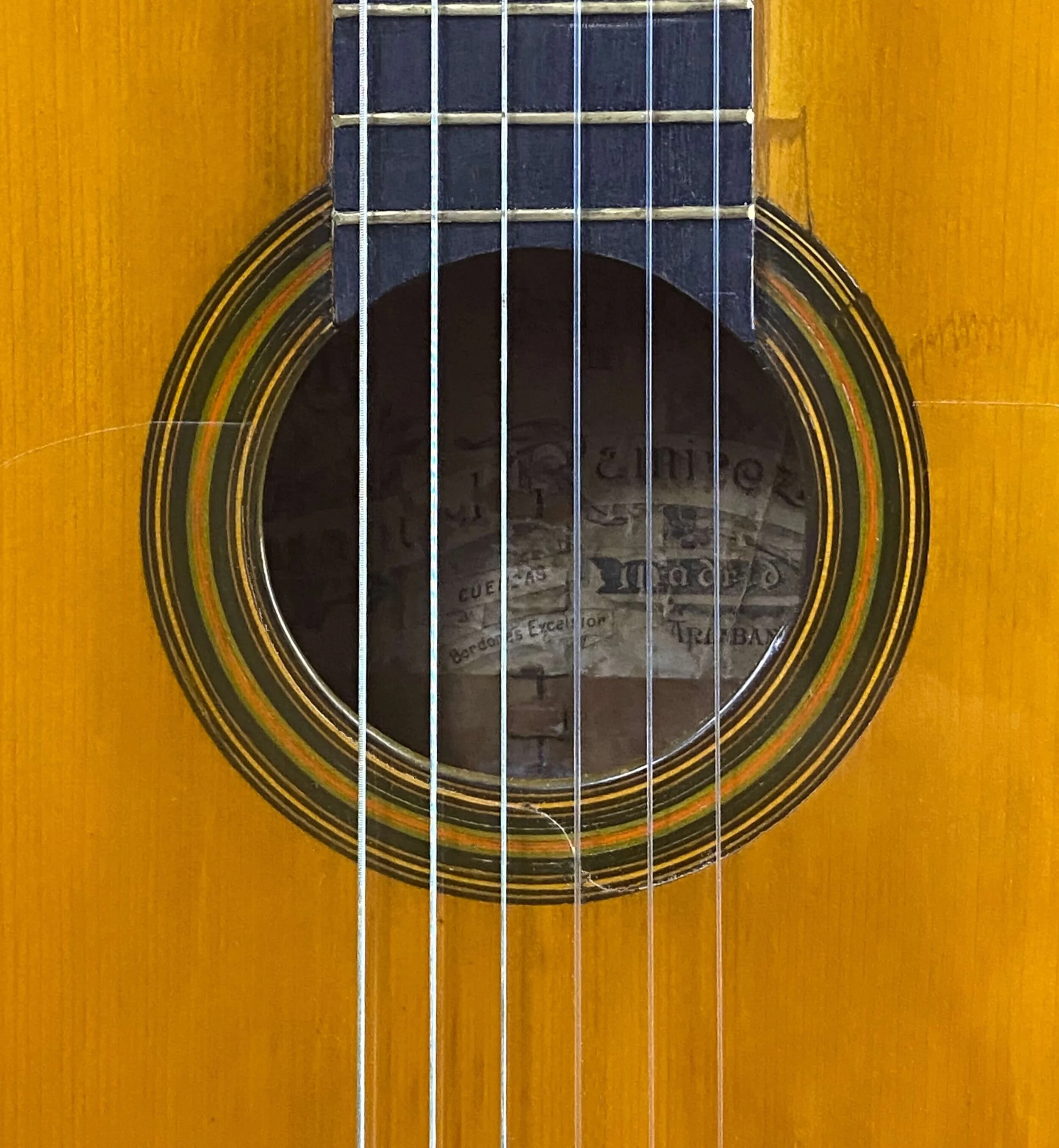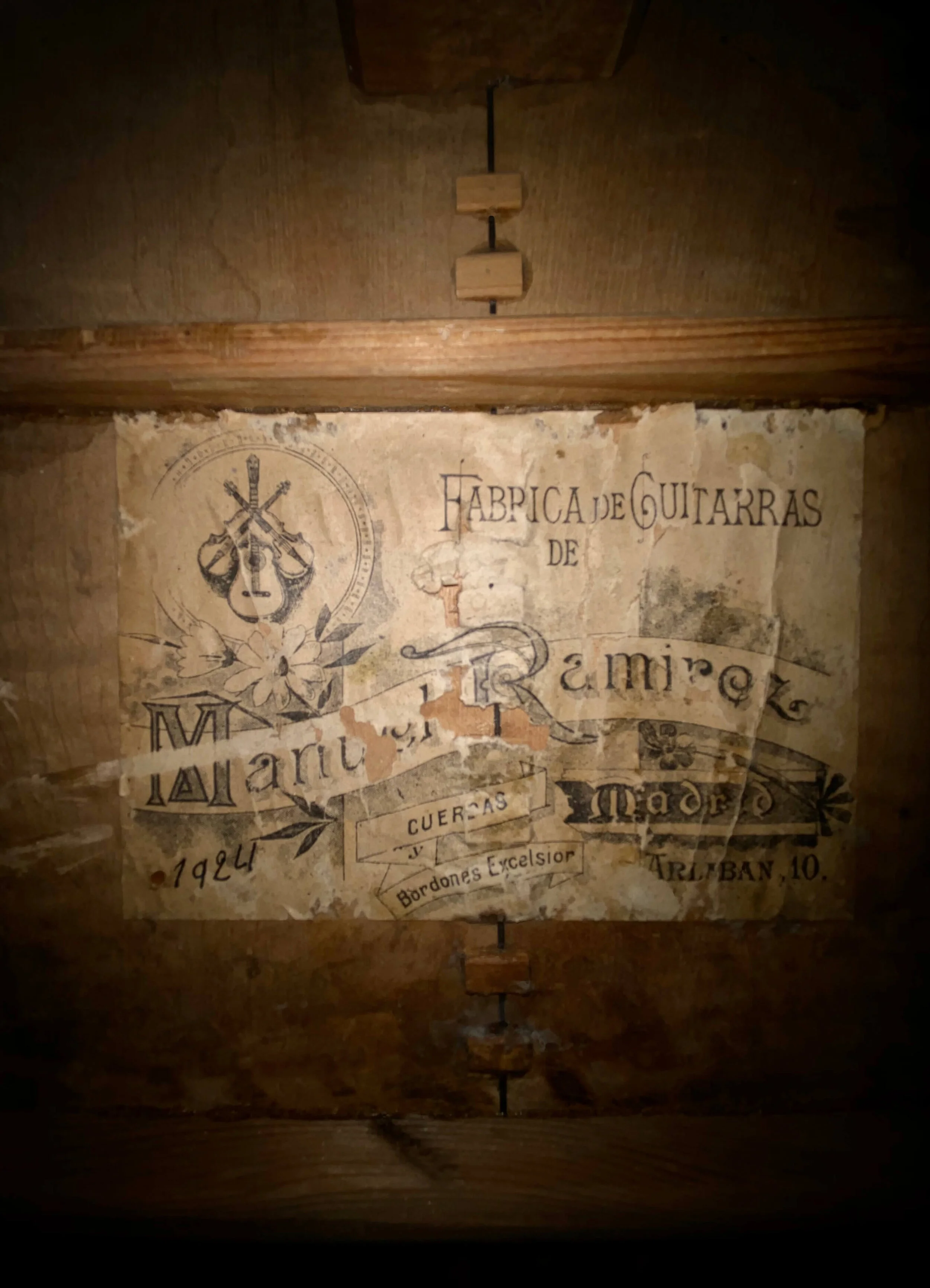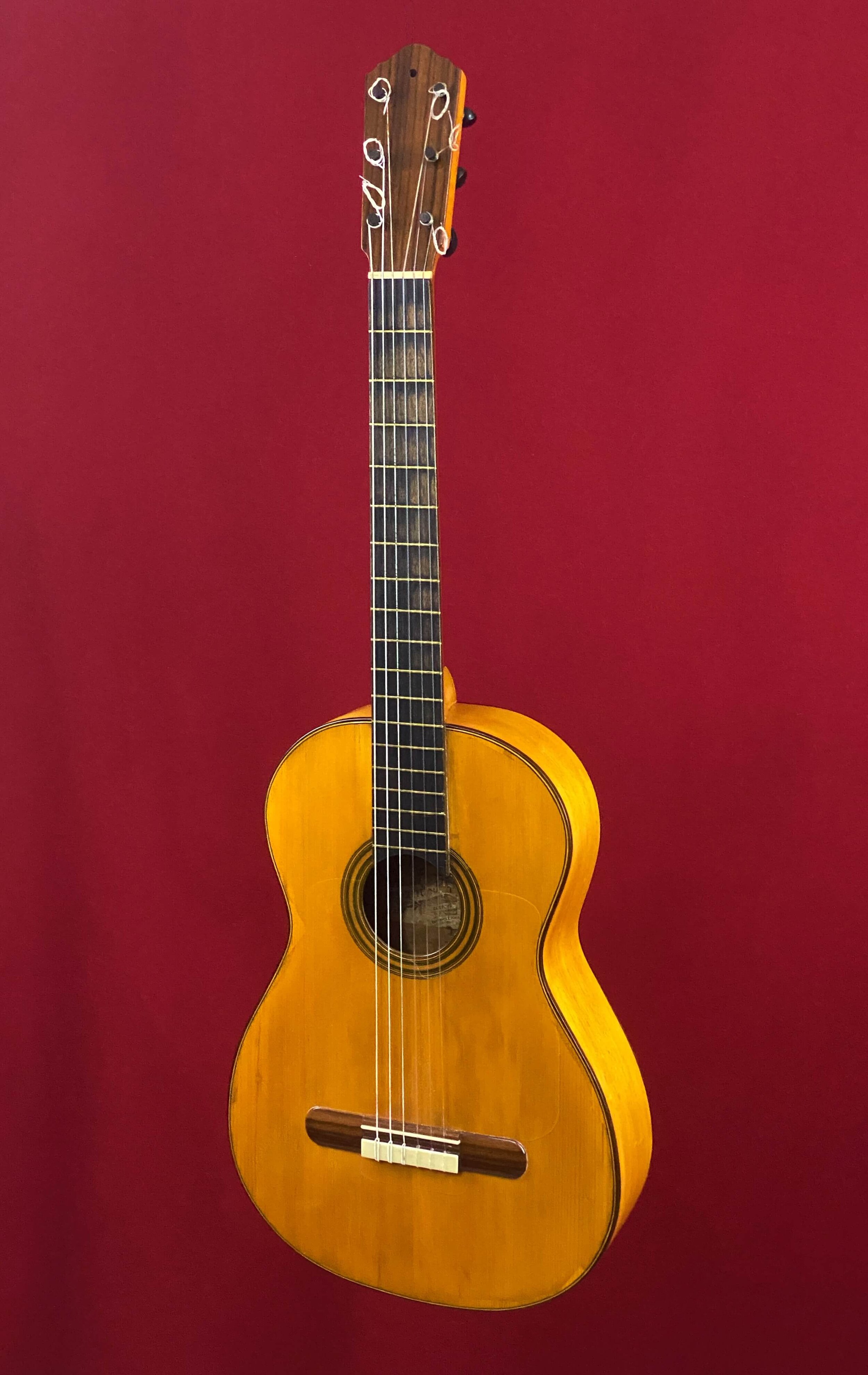1924 Manuel Ramirez, (Modesto Borreguero) maple flamenco guitar
1924 Manuel Ramirez, (Modesto Borreguero) maple flamenco guitar
Make: Manuel Ramirez
Model: Maple flamenco guitar
Model Year: 1924
Top: German Spruce
Back & Sides: European maple
Scale: 635mm
Nut: 50mm
Finish: French polish
Tuners: Ebony Pegs
Country: Spain
Condition: Used - Excellent
Location: Tucson
Manuel Ramírez is renowned for his extraordinary generosity in gifting a magnificent guitar to a young Andrés Segovia in 1912—an instrument that Segovia treasured and used for the first 25 years of his illustrious career. Born in 1864 in Alhama de Aragón, Zaragoza, Manuel was the son of a master carpenter who worked for a developer in Madrid's Salamanca district. He learned the art of guitar making from his brother, José Ramírez, who had apprenticed with the esteemed Francisco González.
In 1890, Manuel struck out on his own. Although he initially considered emigrating to Paris—a path followed by Julián Gómez Ramírez (no relation) under José’s tutelage—Manuel instead established a workshop on the Plaza de Santa Ana in Madrid. This decision created a permanent rift with his brother José, and the two never reconciled. As business was slow in the early years, Manuel, known for his restless and Bohemian nature, took on various side jobs, including working as an electrician for the Madrid Electric Company. During these times, his workshop was often left in the capable hands of his talented disciple, Enrique García.
In 1897, Manuel relocated his shop to Calle Arlabán, No. 10, where he remained until 1912 before moving to No. 11. An accomplished violin maker as well, Manuel earned the prestigious title of Official Luthier of the Royal Conservatory of Madrid and gained international recognition, winning a medal at the 1893 Chicago World’s Fair for his outstanding craftsmanship.
Manuel Ramírez played a crucial role in shaping the next generation of master luthiers. His protégés included Enrique García, Santos Hernández, Modesto Borreguero, and Domingo Esteso, who all went on to establish their own remarkable legacies. After Manuel’s death in 1916, his widow, Victoriana Sanz de Santamaría, managed the shop. Santos Hernández, Domingo Esteso, and Modesto Borreguero remained loyal to Manuel’s memory, continuing to work for his widow. Following her passing in 1921, her son, Manuel Rodríguez Sáez, took over the shop, and Modesto Borreguero continued crafting guitars under the Manuel Ramírez label. Even after opening his own workshop in 1923, Borreguero produced occasional guitars for the Ramírez shop until it closed around 1924.
This particular guitar features a label used by Manuel Ramírez between 1903 and 1909. Notably, Ramírez did not include specific dates on his labels during this period. I discovered the guitar in Seville and entrusted its restoration to Andrés Domínguez Guerrero, a master luthier whose exceptional craftsmanship brought the instrument back to life. I am deeply satisfied with the results and proud to have contributed to the revival of this extraordinary guitar, which continues to produce remarkable sound, preserving its historical and musical legacy.











